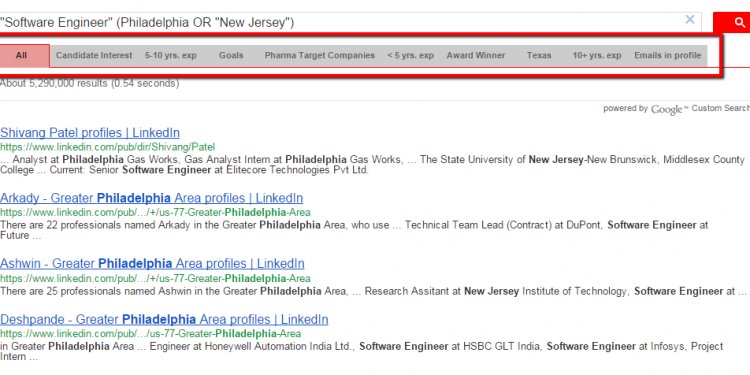
Boolean search tips for recruiters
At the start of this year I was lucky enough to join the LinkedIn Recruiter product team to focus purely on the search experience. After half a year of talking with customers and engaging with the product, I am extremely impressed with the power that Recruiter delivers to help source talent. While we are hard at work building a better search, I want to share some thoughts on one trick that can help you get better results today when using boolean searches.
How LinkedIn Recruiter search reads your query
When you search using boolean operators in Recruiter, we give you exactly what you search for. This is both extremely powerful and highly sensitive because we do not correct common mistakes and defer to the expertise of the recruiters using the platform. To make sure you don’t build a bad boolean query, it is important to understand how Recruiter search understands boolean.
When search reads your query, it relies on a specific order of operations. This is similar to the concept of order of operations in arithmetic. For the expression 3 + 5 * 4, we first multiply 5 times 4 (to arrive at 20) and then add 3 to get the final answer (23). This is because the order of operations dictates that we should handle multiplication before we handle addition. Even though we all understand the order of operations, the statement 3 + 5 * 4 is confusingly written. The expression 3 + (5 * 4) is easier to understand and more accurate.
Why and how using parenthesis improves your search
The parentheses clarify which part of the equation to evaluate first. The same rules apply to boolean queries. Not using parentheses leads to ambiguity in how the query should be interpreted. As a result, our interpretation might not match what you are looking for, leading to inaccurate results.
For example, a common search mistake I see is the mixing of OR and AND operators without parentheses, or OR and NOT operators without parentheses. Since OR and AND, or OR and NOT have different precedence, it is important to put parentheses to make sure your intent is absolutely clear to the search engine.
Consider the search:
Nurse OR Technician AND Surgery
The searcher does not provide us with an order of operations. By reading this query I can understand that the searcher wants to find:
(Nurse OR Technician) AND Surgery
However because AND has precedence over OR, our search engine will read this as:
Nurse OR (Technician AND Surgery)
The above ambiguous search string will display nurses without experience in surgery as part of the search result output.
Another common mistake:
programmer OR engineer OR developer OR coder NOT intern
The searcher clearly does not want to see interns and presumably means:
(programmer OR engineer OR developer OR coder) NOT intern
However because NOT has precedence over OR, our search engine will read this as:
programmer OR engineer OR developer OR (coder NOT intern).
The above query will result in programmer, engineer or developer interns in the result set since it is applying the NOT boolean operator only to “coder” keyword.
When handling searches, the overall order to precedence is:
- Quotes [“”]
- Parentheses
- NOT
- AND
- OR
Please note that the “+” and “-” operators are not officially supported by LinkedIn and I do not recommend you use these. Using AND in place of “+” and NOT in place of “-” makes your query much easier to read and guarantees that we will handle your search correctly. Finally, please note that when using NOT, AND or OR operators, you must type them in all capital letters for Recruiter search to correctly register them.
If you take one thing away from this post, it is that you should always use parentheses to make your query as clear as possible. A few minutes spent thinking about how you want your search to be interpreted will go a long way to getting you the best results for your candidate search.
If you want to learn more about boolean search best practices, try our online training course specifically designed for Recruiter search. [*You need a Recruiter license to view this training course].

















